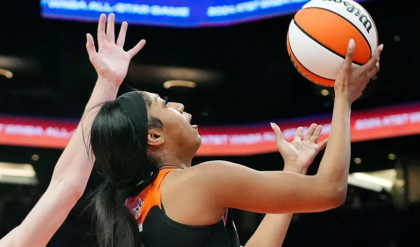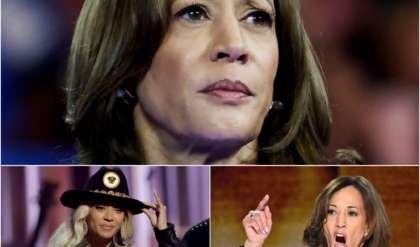The WNBA has been a drama-filled arena this season, drawing millions of viewers in with its exciting rookie class. Caitlyn Clark is a star among stars, but she’s not without controversy surrounding her.
Kennedy Carter recently stepped over a line during a heated on-court altercation between the Chicago Sky and the Indiana Fever, causing shockwaves throughout the league. What began as an ordinary game quickly turned into something unexpected. But first, where did it all begin before we even got started?
Caitlin Clark recently found herself at the center of controversy during a WNBA game against Kennedy Carter, where tensions escalated both verbally and physically. Despite the challenges, Clark’s exceptional skill and resilience shone through, leading her team to victory and sparking important discussions about representation and expectations in women’s basketball. Her performance not only solidified her status as a key player but also highlighted broader issues within the league.

The incident with Kennedy Carter underscored the intense competition and emotional stakes of the WNBA season. Carter’s actions sparked debates about sportsmanship and the boundaries of competitive play, drawing attention to the pressures faced by athletes in high-profile games.
Caitlin Clark, amidst the scrutiny, displayed maturity and composure, navigating the volatile situation with grace while maintaining her focus on the game.
Throughout the game, Clark’s performance was nothing short of stellar.
She demonstrated remarkable resilience by turning frustration into determination, using the controversy as fuel to elevate her play. Her leadership on the court was evident as she orchestrated strategic plays and contributed significantly to her team’s success.
Clark’s ability to channel her emotions into positive outcomes not only boosted her individual performance but also inspired her teammates to rise to the occasion.

On the defensive end, Clark’s agility and tactical awareness were key factors in neutralizing opponents’ attacks and transitioning seamlessly to offense.
Her versatility as a player was on full display, challenging stereotypes and proving her capability to excel in all facets of the game. The intensity of her rivalry with Angel Reese added another layer of competitiveness to the match, further highlighting Clark’s impact on the league’s dynamics.
Beyond her on-court achievements, Caitlin Clark’s influence extends to broader discussions about representation and visibility in women’s sports. Her ability to attract attention and draw defenses underscores her significance in challenging traditional perceptions of female athletes. As a pivotal figure in women’s basketball, Clark’s journey from adversity to accomplishment serves as a beacon of inspiration for future generations, reshaping narratives of leadership and resilience in sports.
In conclusion, Caitlin Clark’s performance amidst controversy exemplifies her ability to thrive under pressure and navigate challenges with poise. As she continues to make waves in the WNBA, her contributions not only elevate her team but also propel crucial conversations about equity, representation, and the evolving landscape of women’s basketball.





